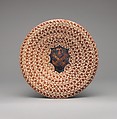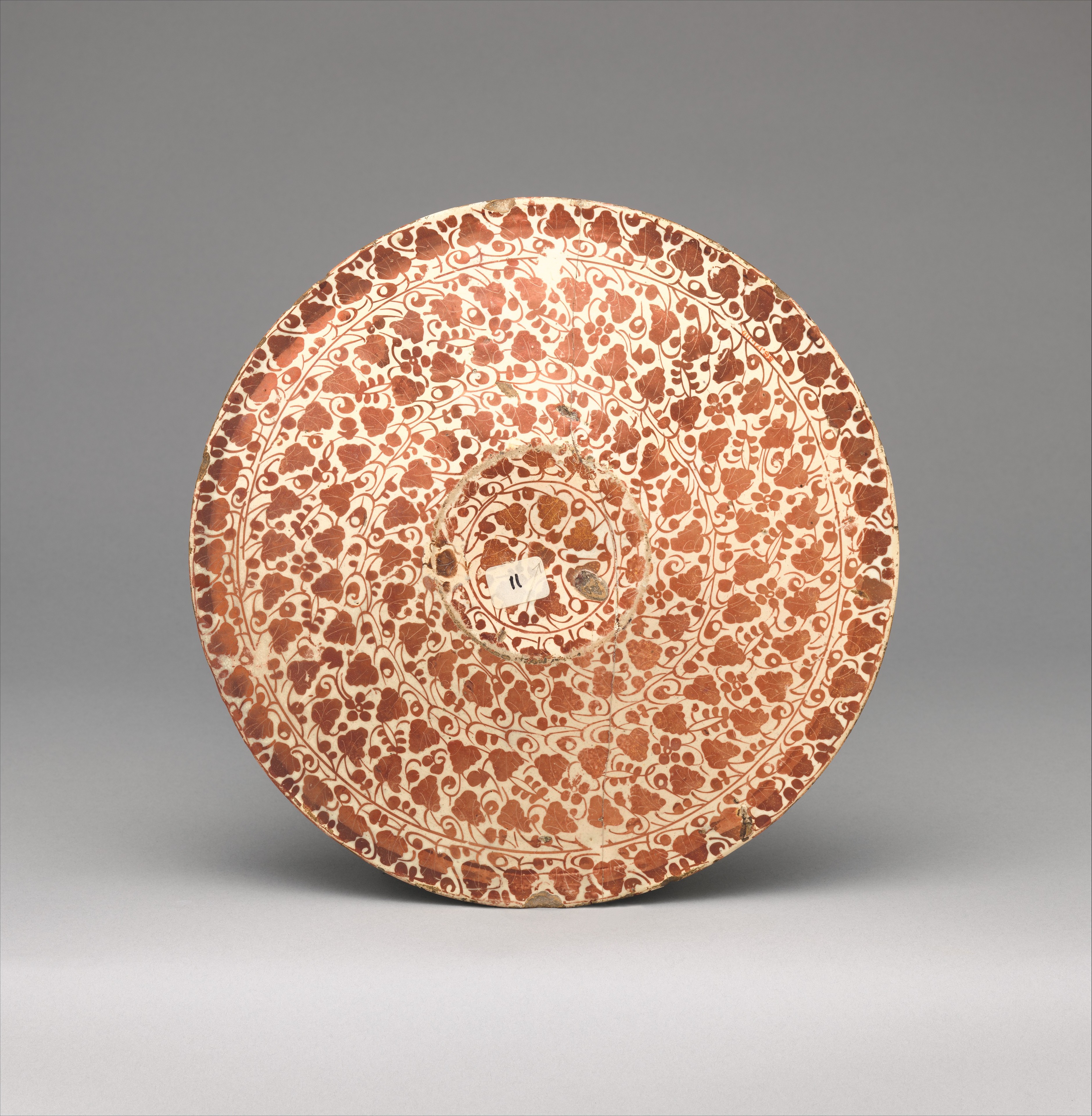Plate
Not on view
This plate is emblazoned with the coat of arms of the Morelli family of Florence, and must have belonged to a large table service. This small plate, because of its size, was probably used primarily for eating. Examples of matching services have only rarely survived, although documents indicate great numbers were made for both the domestic and the export markets. In a receipt dated 1454, the widow of Don Pedro Buyl, overlord of the Manises lusterware factories, received payment of 6000 gueldos (roughly equivalent to $360,000 in 2016) as a tithe on the potters’ goods destined for the export market. These wares leaving Grao, the port of Valencia, destined for Mediterranean markets, generally were transported by ships of Mallorcan registry. For this reason, lusterware, and later all glazed earthenware, became known as majolica. The ivy pattern rendered completely in copper luster became an increasingly popular decorative motif toward the end of the century as potters more literally imitated the surface sheen of precious metalwork.
Due to rights restrictions, this image cannot be enlarged, viewed at full screen, or downloaded.
This artwork is meant to be viewed from right to left. Scroll left to view more.




